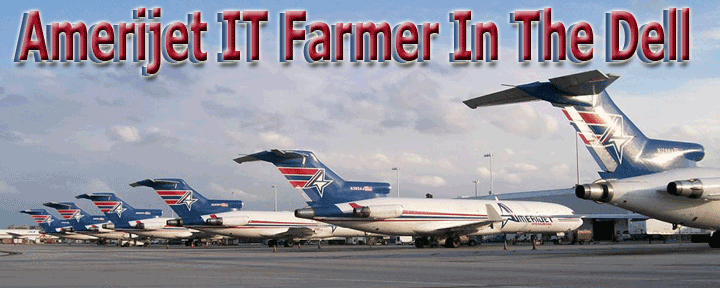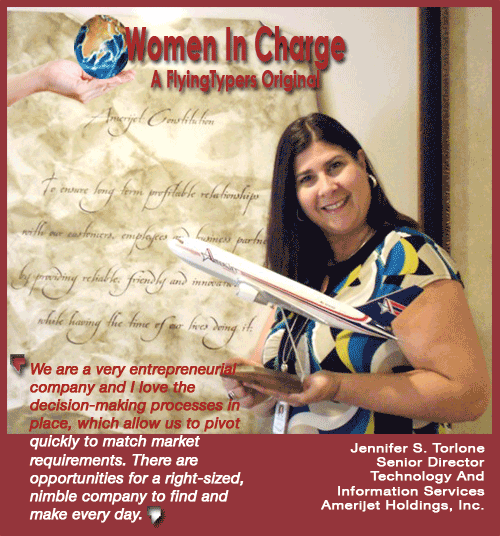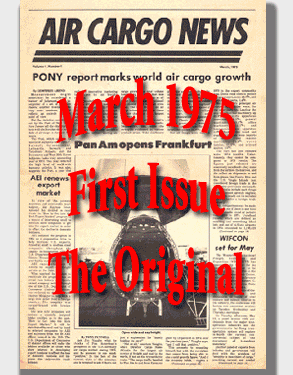| 
 For
Amerijet International, time is of the essence. As a cargo shipping company
with a growing global footprint, service to more than 550 destinations
worldwide, and more than 200 million pounds of cargo carried per year,
customers in the Americas, Mexico, the Caribbean, Europe, Asia, and the
Middle East depend on Florida-based Amerijet to move their personal and
commercial cargo quickly, securely, and reliably by land, sea, or air. For
Amerijet International, time is of the essence. As a cargo shipping company
with a growing global footprint, service to more than 550 destinations
worldwide, and more than 200 million pounds of cargo carried per year,
customers in the Americas, Mexico, the Caribbean, Europe, Asia, and the
Middle East depend on Florida-based Amerijet to move their personal and
commercial cargo quickly, securely, and reliably by land, sea, or air.
Amerijet's worldwide cargo transportation
services depend on a reliable IT infrastructure to get planes in the air
faster, meet more customs cutoff times, provide better customer service,
and support organic business growth.
Jennifer S. Torlone is the Senior Director, Technology
and Information Services for Amerijet Holdings, Inc. Since joining Amerijet
in May of 2011, Jennifer has positioned the company as a leader in technology,
modernizing the applications, architecture, and infrastructure.
She has transformed the Information Technology
organization at Amerijet into a team of innovators, business strategists,
project managers, and cross functional teams, while outsourcing the day-to-day
activities (level I and level II support) to Dell. Her vision is to make
it easy to do business—both with internal and external customers.
A three-year plan Jennifer initiated included
moving Amerijet to a new data center facility and replacing the company's
mixed-vendor environment with a VMware and end-to-end Dell solution comprised
of hardware, software, and services to provide maximum availability and
performance for its Window Server-based business applications.
Applications include cargo management, General
Ledger and accounting, flight operations, MRO and warehousing. The cargo
management system is home grown and is in the process of being redeveloped
using “Fast Track” technology from Dell. Dell Compellent Fast
Track groups the most active data blocks and places them together to improve
performance; it also helps reduce long-term storage costs by maximizing
performance on cost-effective drives.
Amerijet's IT team migrated its entire “next-gen”
data center in just 10 hours, and its new virtual environment enables
the company to cut data center facility costs by 60 percent enabled by
energy efficient, virtualized infrastructure. A reduction in the time
to close flights by 96 percent (from 2 minutes versus 45 minutes) and
expediting freight transportation to improve customer satisfaction are
some of the key achievements for Jennifer’s team of 13 development
and support staff. Amerijet can now run cargo inventory reports in seconds
versus the 30-40 minutes it used to take and avoid unplanned downtime.
“We are a very entrepreneurial company
and I love the decision-making processes in place, which allow us to pivot
quickly to match market requirements,” Jennifer says. “There
are opportunities for a right-sized, nimble company to find and make every
day.”
For example, although not an IATA member airline,
Amerijet participates in CNS and is a member in CASS Mexico. It served
as a pilot and was the very first airline to actively use and connect
to IATA’s Simplified Interline Settlement (SIS) electronic invoicing
platform by the due date. According to IATA “…ICH (interline
clearing house) Web service will be discontinued and all billings to the
ICH will need to be made via SIS” by Q2 2013.
EDI partners include FedEx, UPS, DHL, AA, and
DL using industry standard Cargo-IMP. Amerijet is also a participant in
the CBP ACAS pilot using Descartes technology. With one year left into
her three-year plan, Jennifer says “what’s left is CRM, virtualization
of our desktops, Wi-Fi improvements, infrastructure enhancements, and
improvements in VOIP (voice over IP).”
It’s very much a little-engine-that-could
story, and who knows what’s next.
Geoffrey
|






